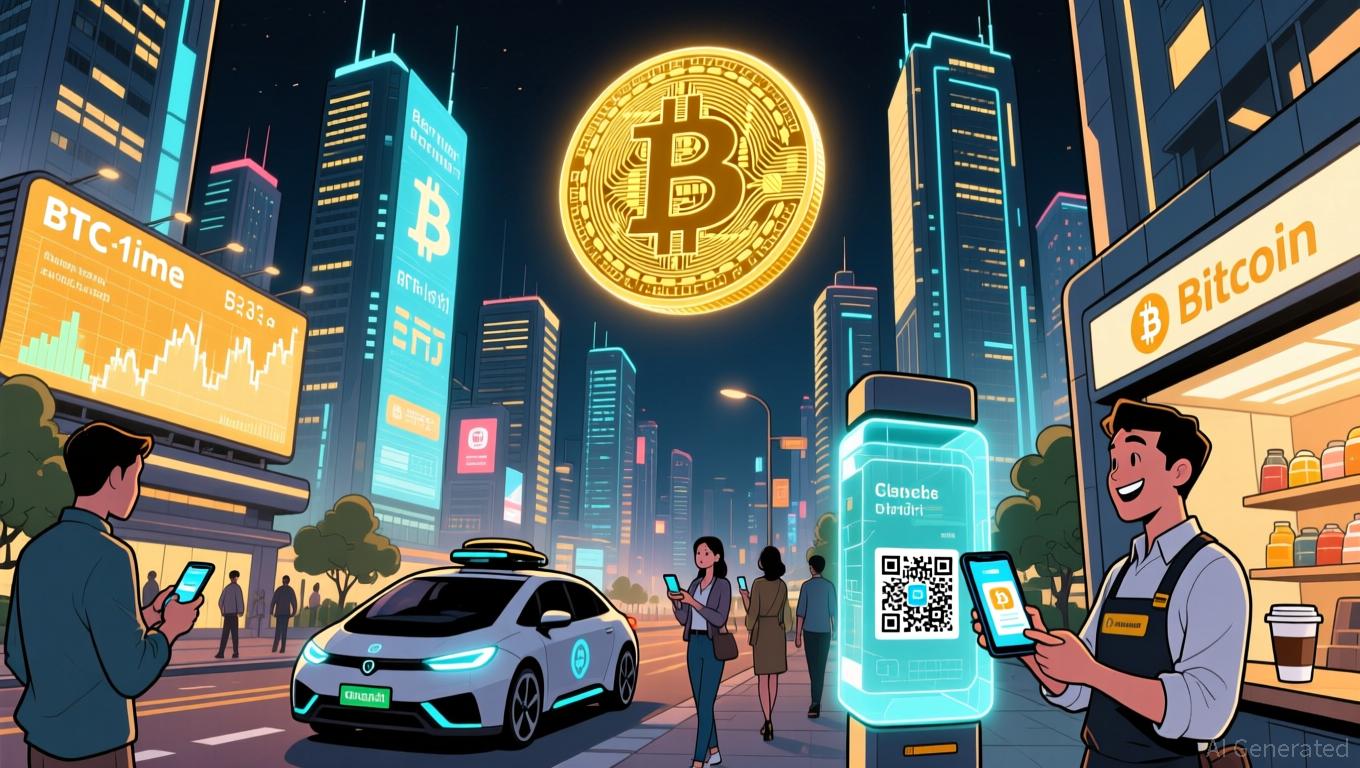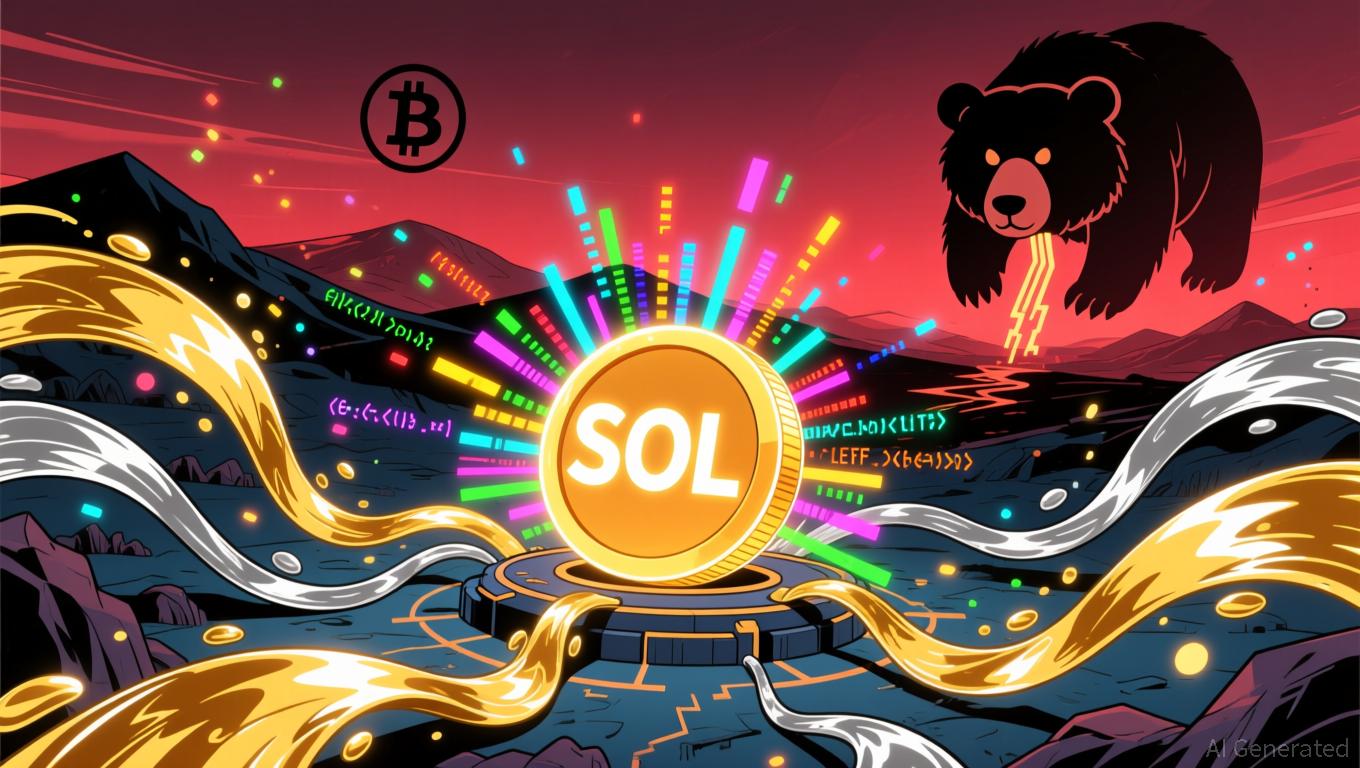Solana’s Latest Price Plunge: Underlying Dangers in Fast-Paced Blockchain Platforms
- Solana's 2025 price crash exposed systemic risks in high-performance blockchain networks, driven by technical vulnerabilities and validator governance challenges. - Network congestion events, single-client architecture flaws, and validator centralization risks eroded user trust despite throughput improvements. - Scalability bottlenecks during peak activity and unresolved client-specific bugs fueled institutional skepticism amid declining DeFi TVL and stablecoin share. - A $352M Q3 net loss and regulatory
Network Congestion and Validator Outages: A Recipe for Instability
In February 2024, Solana suffered a network outage lasting five hours due to a flaw in the Agave client’s Just-in-Time compiler, revealing the risks of relying on a single client. The network required a coordinated restart, as all validators depended on either Agave or the Jito fork

Scalability Challenges and the Limits of Innovation
Solana’s development has focused on maximizing throughput, with internal tests indicating that
Analysts point out that Solana’s dependence on the Agave validator client until late 2024 created risks of simultaneous failures. While the introduction of Firedancer’s hybrid mode and Frankendancer broadened the validator landscape,
Systemic Risks and the Price Crash: A Perfect Storm
The combination of technical shortcomings and economic pressures has sent Solana’s price into a downward trend. By the end of 2025, on-chain data—such as 70 million daily transactions and $143 billion in monthly DEX volume—stood in stark contrast to falling DeFi TVL and shrinking stablecoin market share
Worsening the situation, Solana Company posted a net loss of $352.8 million in Q3 2025, despite a slight uptick in revenue. Executive chairman Joseph Chi cited digital asset market volatility as a major hurdle, while
The Path Forward: Balancing Speed and Security
For Solana to recover, it must tackle systemic vulnerabilities without losing its edge in transaction speed. Implementing slashing penalties for malicious validators and expanding liquid staking tokens (LSTs) could boost both security and capital efficiency
Institutional interest—such as tokenized stocks and potential SOL ETFs—could provide support, but only if Solana can prove its reliability over time.
Conclusion
Solana’s price collapse reflects more than just a market downturn—it signals deeper structural issues within high-speed blockchain platforms. While technical improvements and a more diverse validator set have strengthened resilience, ongoing scalability and governance problems continue to challenge the network. The key takeaway for investors: speed alone cannot uphold a blockchain if stability and decentralization are compromised.
Disclaimer: The content of this article solely reflects the author's opinion and does not represent the platform in any capacity. This article is not intended to serve as a reference for making investment decisions.
You may also like
Bitcoin Update: Texas Secures $10 Million in Bitcoin as Part of Strategic Digital Gold Reserve
- Texas becomes first U.S. state to buy $10M Bitcoin via BlackRock’s IBIT ETF, averaging $87,000 per coin. - Strategic Bitcoin Reserve aims to diversify state assets, aligning with corporate trends like MicroStrategy’s $835M BTC purchases. - Critics highlight crypto volatility risks, while proponents argue Bitcoin offers inflation hedging amid evolving regulatory frameworks. - Move could inspire other states to adopt digital assets as governments address crypto mining security and institutional adoption ch

Solana News Update: Institutions Seize the Dip as Solana ETFs Withstand Crypto Market Slump
- Solana ETFs attract $476M in inflows despite crypto market slump, led by Bitwise's BSOL with 89% share. - Institutional investors "buy the dip" as SOL price drops 36%, contrasting Bitcoin ETF outflows of $1.1B. - 21Shares and VanEck launch low-fee spot Solana ETFs, expanding institutional adoption amid bearish price trends. - CME's new SOL/XRP spot futures and regulatory clarity signal growing infrastructure for altcoin exposure. - Analysts forecast over 100 crypto ETFs by 2026, with Solana's staking yie

Bitcoin Updates Today: JPMorgan's Bitcoin Report: Is a Doubter Taking a Chance as Crypto Goes Mainstream?
- JPMorgan Chase launches a Bitcoin-ETF-linked note offering up to 16% returns with principal protection under specific conditions. - The product reflects traditional finance's crypto shift, mirroring rivals' innovations and capturing exposure without direct asset ownership. - It carries risks of principal loss if Bitcoin underperforms and sparks controversy over crypto account closures and forced selling warnings. - Bitcoin's valuation now depends on offchain factors like ETF holdings and macroeconomic tr
XRP News Today: XRP ETFs Drive Expansion, Yet Fluctuations and Large Holder Sell-Offs Present Challenges
- U.S. approval of XRP ETFs has driven $423M in institutional inflows, outpacing Bitcoin and Ethereum ETFs. - Bitwise and Franklin Templeton's low-fee XRP ETFs now dominate trading, with whale sales and market volatility tempering price gains. - XRP tests $2 support level amid 41.5% of supply in losses, with analysts predicting parabolic growth if resistance breaks. - Ripple's staking features and ODL expansion, plus Grayscale's trust-to-ETF conversion, signal long-term utility-driven demand. - Regulatory